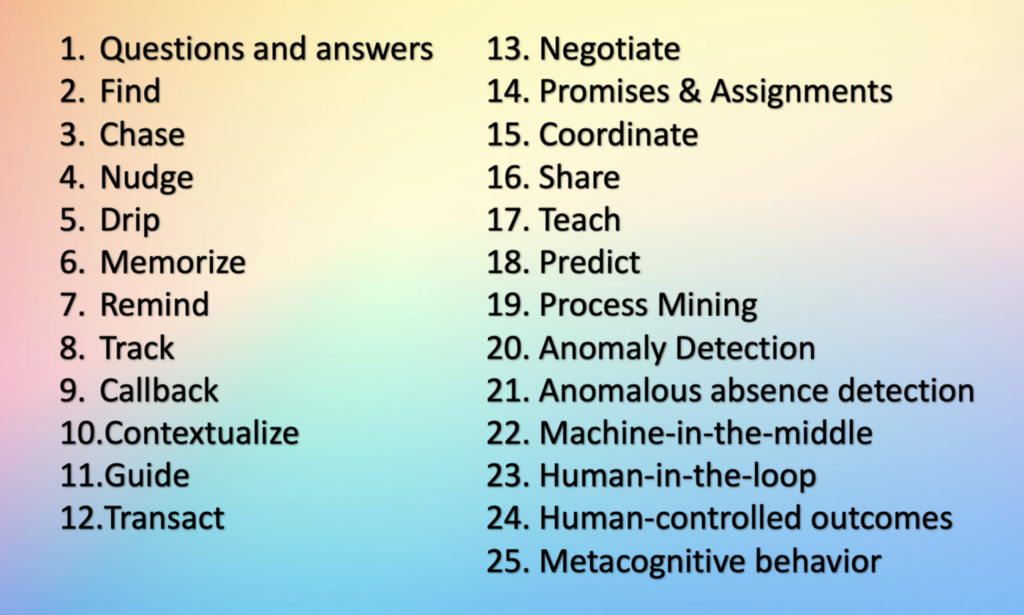Robb Wilson is very much like the machines he talks about…inconspicuous and mostly unseen…
His preference is to remain in life’s background, toiling unseen and surfacing his ideas in such a way that it benefits all.
I count myself fortunate to have spent more than two hours on a call with Robb…courtesy of Jordan Ratner, but Robb’s video feed was switched off…
…later I learnt this is done very much intentionally…he was pacing for the duration of the call, wrestling with and purifying the ideas he was trying to relay…in real-time.
There is a ceiling on how much complexity you can condense into a purely visual interface.
~ Robb Wilson
Robb Wilson is a modern day Marshall McLuhan …I was not surprised to learn from the book that Robb grew up knowing Marshall Mcluhan and spent much time under his tutelage.
It was Marshall McLuhan who coined the term “The Medium Is The Message”…and in the past there has been variations and iterations on this idea…
I consider the ideas in this book as a quantum leap from Marshall McLuhan’s vision…Robb’s vision is one of a medium that is unseen and primarily conversational.
In his own words…
“…the further the interface recedes into the background during an experience, the more frictionless that experience becomes…”
Intelligent Digital Workers (IDW)
The book places emphasis on orchestration, Gartner crudely refers to this basic idea as the Customer Engagement Hub (CEH) concept.

However, the ambit of Robb’s vision for orchestration and automation is much richer and broader. It is a super-high fidelity version compared to the rudimentary premise of CEH.
Intelligent Digital Workers (IDW), will work in an orchestrated fashion, being personal and addressing an audience of one…efficient and unseen to not only act on user input (speech, gestures, behavioural patterns) but also learning and automating complicated tasks with routine efficiency.
The challenges current conversational AI frameworks face are scaling, orchestration and being very much medium bound.
The missing link to widespread adoption of hyper-automation is a scalable interface.
~ Robb Wilson
There is this concept of moving away from transactional based experiences to relationship based experiences…and having better-than-human interactions and experiences. Moving away from a static piece of technology, towards adoption, iteration on new technologies, skills and functions.

The book makes a good point that the answer is not more integration, but a restructuring effort. The many daily monotonous and arduous tasks requires designers to ideate on automation and how automation should evolve.
…creating a framework where conversational AI can thrive is insanely difficult…but it’s potential is unmatched…
~ Robb Wilson
Architecture & Effort
In the simplest terms, intelligent automation within an ecosystem of orchestrated technologies…
…introduces an organisation to a state of hyperautomation.
In chapter seven of the book, the components to solve for this challenge are explained…the image below is the basic structure.

The book does emphasise the fact that the design and implementation of such a solution will not be easy…and in fact will be arduous and hard. The solution is not as easy as throwing a few disparate machines at a number of problem areas within an organisation.
A bold, overarching strategy is required, alignment within departments and weathering the initial organisational trauma and resistance.
Raising an IDW requires patience, diligence and dedication. Robb highlights four stages:
▶️ Literacy ➡️ Knowledge ➡️ Intelligence ▶️ Wisdom

A seen in the image above, I love Robb’s take on the iron triangle or triple constraint. There is no magic involved, any decent longterm initiative and implementation will have to live within these constraints.
…Before you touch technology…you need to envision the experience you want to create…
~ Robb Wilson
Patterns and Sequences
In closing, a very useful element in Robb’s book is the notion of key patterns…these patterns must be recognised and in turn these key patterns can be sequenced…
Key patterns include (Page 179):

The book ends with a treasure trove of more than 60 conversation design principles…many of which I have not even heard of or considered before.
These principles redefine the roles we have become accustomed to in terms of chatbot design, development and maintenance.









